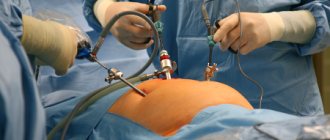All the expectant mother thinks about is the long-awaited child and his condition. Every woman tries to do everything for proper pregnancy, so that it does not affect the future health of the baby. This is why pregnant women refuse many procedures that are questionable or potentially dangerous.
It happens that the supervising doctor prescribes fluorography. Usually at this moment many people become overwhelmed with panic and confusion. Among expectant mothers, there is a fairly ingrained opinion that this research method is extremely dangerous and unacceptable.
Is it possible to do fluorography before conception?
First of all, I would like to remind you that in our country all persons over 15 years of age must undergo a fluorographic examination at least once a year. Certain categories of citizens at risk - 2 times a year. Such rules were created in connection with the high increase in the incidence of tuberculosis.
When you come to an obstetrician-gynecologist with the goal of giving birth to a healthy child, he naturally requires the parents to undergo a full examination, which includes an X-ray of the lungs.
Fluorography at the pregnancy planning stage is completely safe. Would you like me to provide you with evidence? Please:
- Firstly, all modern medical institutions are equipped with digital equipment that allows you to take pictures with minimal radiation doses.
- The radiation dose for digital fluorography is about 0.04 millisievert; for comparison, the same dose can be received when flying on an airplane, and you will receive the same radiation in a month just walking on the street. You won’t refuse to go for a walk or fly on a plane if you want to get pregnant in the near future, right?
- X-rays have a clear focus on the chest, and the uterus, even in the 1st trimester, is still significantly removed from the lungs.
- Thanks to X-rays, it is possible to detect not only pathology in the lungs, but also changes in the cardiovascular system and spine. Believe me, the presence of some diseases is much more dangerous than x-ray radiation, so the examination is carried out for both men and women.
I would like to note one more important point: modern equipment makes it possible to obtain an image instantly, the doctor immediately sees it on the screen, this allows you to avoid repeated examinations.
Home / For patients / List of publications / Today we will talk about... fluorography
Today we will talk about... fluorography
The meaning of the word FLUOROGRAPHY (hereinafter FG) is known to everyone today. Many people have gone through this procedure more than once. If this is not the case, then think about your attitude towards your health. FG allows you to identify the disease when there are no obvious symptoms or reasons for concern. For example, tuberculosis in the early stages is sluggish and asymptomatic, and cough, weakness, increased body temperature can be mistaken for symptoms of acute respiratory viral infection, and only an FG examination of the lungs can detect the source of infection.
What is FG?
This is a method of radiation diagnostics, which is based on photographing an image from the receiving screen and transferring it to relatively small film. FG gives a reduced image of the object.
How can you prepare for FG?
No special preparation required. You can do FG even if you wear a pacemaker or cardioverter-defibrillator. Moreover, FG can help determine whether these devices are installed correctly and whether there are any mechanical damages. During pregnancy, FG is usually not done, or (if necessary) measures are taken to minimize the effects of radiation on the fetus. The FG procedure itself takes no more than 10 minutes. All you need is to undress to the waist, take off your jewelry, because... Clothing and jewelry can make photos appear less clear. The examination is carried out in local clinics free of charge (if you have a medical insurance policy).
What happens to you during FG?
FG is painless and quick. During the procedure, your body is between the X-ray machine and the X-ray film. You take a deep breath and hold it for a few seconds while the image is printed. Holding your breath after inhaling makes the image of your lungs and heart clearer.
You don't feel anything when the X-rays pass through your body. If you have arthritis or some kind of injury and it is not comfortable for you to be in the required position, the laboratory technician will help you find a position that will be comfortable and ensure the accuracy of the diagnosis. If it is difficult for you to stand, photographs are taken in a sitting position.
What does FG reveal?
All received images are analyzed by a radiologist. He focuses on changes in the size and shape of the heart, which can indicate a variety of conditions, such as heart failure, congenital heart disease, fluid around the heart, and problems with one or more valves; the outline of large vessels near the heart (aorta and pulmonary veins and arteries), allowing to determine the presence of atherosclerosis, aortic aneurysm or other vascular diseases, as well as congenital heart disease. FG can reveal the presence of calcium in your heart and blood vessels. Presence, which may indicate damage to the heart valves, coronary arteries, heart muscle, or the protective sac that contains the heart.
A radiologist can detect diseases or abnormalities in your lungs. Caused by both heart disease - accumulation of fluid in the lungs (as a result of pulmonary edema), and other reasons. The role of FG is very significant in identifying such dangerous diseases as pulmonary tuberculosis, sarcoidosis, and lung cancer. FG helps to identify injuries and pathology of the bone frame, changes in the mammary gland.
An annual FG helps to identify tuberculosis in a timely manner, that is, when it is completely curable, because the “insidiousness” of tuberculosis lies in its inconspicuous and hidden course.
Are there any contraindications to FG?
There are no absolute contraindications to FG examination. Relative contraindications are the patient’s serious condition and pregnancy. It is advisable for nursing mothers to do a digital FG; after the examination, they need to express milk 3-4 times, after which they can feed the baby.
Who needs to do FG and how often?
FG examination is carried out starting from the age of 15. There is no upper age limit for this diagnostic method.
Every citizen must undergo examination at least once a year. Naturally, if complaints of cough, shortness of breath, or weakness appear, the patient should be examined immediately. For those who are in contact with a person with open tuberculosis, FG should be done once every six months.
A group at increased risk of tuberculosis - patients with chronic respiratory diseases, gastric and duodenal ulcers, chronic gastritis, diabetes mellitus, patients with chronic alcoholism, and heavy smokers - should undergo a FG study at least 2 times a year.
Planning stage
According to statistics, recently there has been a significant decrease in the birth rate, which is associated not only with financial aspects, but also with the inability of some couples to have a child. Against the backdrop of this problem, experts are developing universal tips and recommendations, the observance of which will help a woman become pregnant. Surely you, my dear readers, have also looked at similar notes. Is not it?
Among the items in the list of warnings there is no prohibition on X-ray examinations. On the contrary, the gynecologist will definitely issue a referral to the patient, which will indicate when to undergo fluorography.
If a woman has already undergone such a study within a year before the date of registration, then a repeat image should not be taken.
Thus, at the planning stage, fluorography will allow:
- exclude the presence of diseases of the vascular system;
- detect the presence of tuberculosis in the early stages;
- record deviations in the development of bone tissue, which can negatively affect the process of bearing a baby.
Digital FG
The latest technologies have improved FG diagnostic methods. At the present stage of development of medicine, the most effective, and at the same time safe, examination method is digital fluorography.
The radiation dose during digital physical examination is reduced by 4-5 times. A fluorogram on a digital device appears immediately after the image is taken, which is of high quality, makes it possible to correct the finished image, and immediately carry out additional research. The patient's data is immediately entered into the computer database.
We all know about preventive FG. However, this is not a vaccination after which a person acquires immunity from tuberculosis. It must be done regularly. Take FLUOROGRAPHY seriously. Today, given the difficult epidemiological situation, each of us should be interested in timely examination. Fluorographic examinations are the main and so far the only way to detect the initial forms of tuberculosis in adults and adolescents.
Remember: neglect of fluorography makes it difficult to detect tuberculosis in a timely manner. Those who evade examination are diagnosed with advanced forms of the disease with decay of the lungs; they are a dangerous source of infection for others and, above all, for children! FG provides a lot of information about your health at low risk and at minimal cost. This is the first step in making a diagnosis.
Take care of yourself and be healthy!
During pregnancy and after the birth of a baby, women try not to do anything that could harm it. All thoughts and actions are aimed exclusively at meeting the needs of the little person. There are even cases where young mothers refuse the necessary treatment. There is an opinion that after childbirth the body is renewed and metabolic processes are activated.
A woman with a baby in her arms is responsible not only for her own life. During this period, it is especially important to monitor your health. During the first weeks after childbirth, a woman in labor needs to visit an antenatal clinic and have a chest x-ray taken. Tests should be taken as early as possible. Fluorography (FLG) of the lungs during breastfeeding (BF) causes concern among patients. Experts agree that such fears are unfounded. Using X-rays, lung lesions can be quickly and easily identified. Especially threatening foci of tuberculosis. Examination of the internal organs of the chest using X-rays is still a minor exposure to radiation. The main purpose of the examination is to detect pulmonary tuberculosis in the early stages. In addition, the image will show possible abnormalities in the body: neoplasms of the mammary glands, lungs, mediastinum, disorders of the structures of the pleura and diaphragm. The epidemiological threshold for the incidence of tuberculosis has been exceeded in many regions. Koch's bacillus is transmitted by airborne droplets. The danger of infection is present in any public place. Fluorography of the lungs is part of any routine examination. Fluorography should be carried out after childbirth, because during this period there is a high risk of any disease for the mother and child. X-rays of the lungs are recommended every year.
How harmful is fluorographic diagnosis?
According to the recommendations of the World Health Organization, fluorographic examination is carried out for preventive purposes, where the level of radiation for a person is up to 5 mSV per year.
When performing digital scanning type fluorography, the average radiation dose is 0.02-0.05 mSV, i.e. almost 37 times less than the permissible dosage.
As a comparison:
The average radiation dose per inhabitant of the planet is 2.5 mSV; in Russia this level is higher, reaching 3.42 mSV during the year.
Consequently, if we resort to the method of digital fluorography, where X-ray radiation is less than in a film apparatus where the dose is 0.1-0.3 mSV. It is recommended to undergo the procedure once a year to monitor the development of pulmonary tuberculosis.
How long before pregnancy can fluorography be done?
Now I would like to tell you at what period it is better to undergo a fluorographic examination. The ideal time to conduct the study is the first week of the cycle. Let me explain, the cycle begins on the 1st day of menstruation, i.e. The picture is taken during it and another 2-3 days after. At this moment you can be sure that there is no pregnancy.
As for future fathers, they are examined at any time before conception. There is no evidence that irradiation affects sperm composition or sperm motility. For those who are especially vigilant, it is recommended to undergo fluorography approximately 2.5 months before the planned conception. You remember that 72-82 days is the total time for the formation and maturation of sperm? That is why, if you do not want to “irradiate your sperm” before planning, get examined after conception or, as I mentioned above, ~ 2.5 months before.
Do you want to know how a fluorographic examination will affect your unborn child? After all, there are moments when a woman did not know that she was already pregnant and took a photo. I think you are glued to the screens with even more curiosity?!
The opinion of doctors on this issue is unanimous: fluorography is contraindicated for pregnant women. It is especially dangerous to do it in the first three months of pregnancy, at this time all the organs and systems of the baby are formed; it is not yet protected by the placenta from adverse factors.
During the interaction of X-rays with body tissues, special compounds are formed - free radicals, which can disrupt cell division. Adults have very few dividing cells and short-term exposure to X-rays is not dangerous for them, which cannot be said about the fetus. In the first three months in the womb, the embryo grows precisely through the formation of new cells. Such influence can lead to various violations:
- chromosomal mutations;
- developmental defects;
- changes in blood composition;
- frozen pregnancy;
- tumor formations;
- disorders of mental and physical development.
Radiation with a dose of 1 millisievert is especially dangerous; in this case, there is a high risk of giving birth to a sick child or miscarriage. But don’t be alarmed, to get such a dose you need to take about 50 pictures in a short period of time.
I didn’t know I was pregnant and had a fluorography done
But what to do if after the study a woman finds out that she is already pregnant? It is worth noting that pregnancy is considered a contraindication to fluorography; the procedure is especially dangerous in the first trimester of pregnancy. If there are serious indications, the examination can be carried out in the second and third trimester.
But don’t panic - timely medical genetic consultation and constant medical supervision will help ensure the health of the fetus. In addition, modern equipment used for fluorography emits minimal doses of radiation, so the likelihood of radiation damage to the baby is extremely low.
To date, the connection between fluorography and conception, as well as various anomalies in fetal development, has not been definitively established. Therefore, expectant mothers should not worry. By passing all the necessary tests and genetic screenings, you can ensure the health and full development of the baby.
Is it worth undergoing fluorography before conceiving a child?
When planning a pregnancy, spouses must undergo a full examination. They need to visit a gynecologist and urologist, take a general and biochemical blood and urine test. Some couples are recommended to take a genetic test if they have a family history of hereditary diseases or are planning to have a child over the age of 35. In addition, the doctor will definitely send the couple for fluorography.
If any diseases are discovered during the examination, they must be treated in advance, before the woman becomes pregnant. Tuberculosis, lung cancer, pneumonia require long-term treatment. Pregnancy will have to be postponed until complete recovery, otherwise it will have to be terminated.
A woman's poor health will affect her ability to conceive and bear a healthy child. During gestation, many drugs are prohibited due to their teratogenic effect, so doctors insist on a complete examination of future parents before the mother becomes pregnant.
Carrying out diagnostics during the planning period of conception
How important is fluorography when planning pregnancy? If planning a child takes place jointly under the supervision of a gynecologist, the specialist prescribes an extensive list of diagnostic measures. Laboratory and instrumental tests will be performed for the examination. Fluorography is no exception and is prescribed for both parents. It is the latest survey that raises many questions, in particular about safety.
To avoid the adverse effects of radiation, experts recommend undergoing examination in the first third of the menstrual cycle (not during ovulation), when the chance of conception is minimal. At other times of the cycle, FLG is carried out only according to the indications of the attending physician, after which it is recommended to take hCG tests (for the pregnancy hormone).
In what cases is a photograph still necessary?
I think it will not come as a revelation to you that there are certain situations in which fluorography is necessary even during gestation.
Doctors prescribe examination in the following cases:
Carriers of tubercle bacilli in the close environment of a pregnant woman pose a serious threat to both the expectant mother and the fetus. Reduced immunity during this period increases the risk of infection, so the woman is at risk.
In this regard, doctors advise doing fluorography specifically in preparation for conception. Let me remind you that the procedure is voluntary and a woman has the right to refuse it. But whether it’s worth risking your health is up to you to decide.
How can you minimize the risks associated with x-rays?
- Most importantly, tell your doctor if you are pregnant or think you might be. This is important for many medical decisions, such as prescribing medications and various procedures, including x-rays. And remember, it is important to report even the earliest stages of pregnancy.
- Sometimes a woman may mistake the symptoms of pregnancy for symptoms of a disease. If you experience any symptoms of pregnancy (nausea, vomiting, breast tenderness, fatigue), think about whether you are pregnant and tell your doctor or the x-ray technician (the person performing the exam) before having an x-ray of your lower body.
- Make sure that a special protective “apron” is used during the x-ray.
- Whenever an x-ray is needed, tell your doctor about any similar x-rays you have recently had. There may not be a need to make another one. It is important to keep a record of the x-rays you and your family have had so that you can accurately provide such information to your doctor.
- Don't hesitate to talk to your doctor about the need for x-rays. You must understand the reason why x-rays are being requested in your particular case.
Recommendations for reducing the adverse effects of radiation
Well, and finally, about something pleasant - reducing the negative impact of X-rays is not so difficult. Be careful during and after the study, follow my recommendations:
- Take pictures only with modern equipment, namely a digital fluorograph. If your medical institution does not have such a device, it is better to go to a paid clinic; the test costs about 300 rubles.
- During the procedure, the specialist must cover the reproductive organs with a lead apron.
- A conclusion is issued indicating the radiation dose.
- If you need to do fluorography during pregnancy, ask your doctor if there are alternative, but safer research methods.
- Proper nutrition will help reduce the negative effects of ionizing radiation. Dairy products are especially valuable in this regard; after the procedure, it is recommended to drink a glass of milk. Include fresh vegetables, fruits, and nuts in your diet.
- If the procedure was performed during pregnancy, it is necessary to consult a geneticist and, possibly, do an extraordinary ultrasound screening of the fetus to find out whether the study affected the child.
- Undergo fluorography only under strict doctor's instructions.
I suggest you watch a short video (07:54) by the famous obstetrician-gynecologist, founder of the International Academy of Healthy Life, Elena Berezovskaya about fluorography.
Pregnancy after fluorography
What X-rays can affect the unborn child?
https://www.youtube.com/watch?v=ytaboutru
During most x-rays (arms, legs, head, teeth, or chest), your reproductive organs are not exposed to the direct x-ray beam. Thus, a correctly performed procedure is not associated with any risk to the unborn child. However, x-rays of the lower body (abdomen, pelvis, lower back, or kidneys) may expose the unborn baby to direct x-rays.
We invite you to read: Chronic prostatitis: symptoms, treatment, prevention
Is it possible to take a dental x-ray when planning a pregnancy?
One of the burning topics of concern to pregnant women is the question of whether it is possible to take x-rays during pregnancy. The reality is that modern people are faced with a large number of factors that cause certain health problems at a young age. Unfortunately, pregnant women are also affected by such situations. In some cases - illness, injury or dental treatment - an x-ray may be necessary to diagnose the body. Thus, the expectant mother faces a difficult choice - to agree or not, because this type of examination carries certain risks for the fetus in her womb. What to do? Let's sort it out in order.











